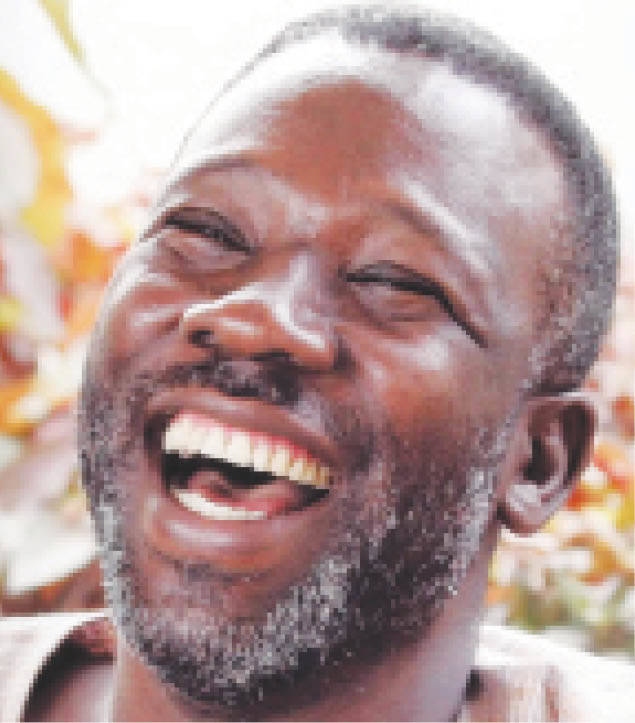
Jerry Buhari is Professor of Fine Art, Ahmadu Bello University, Zaria. An award-winning artist, he has had 12 solo and over 60 group shows in Nigeria and abroad. He recently held his first solo exhibition in Abuja when he spoke to Weekend Magazine about his current work and more. Excerpts:
Weekend Magazine: You recently held your thirteenth solo exhibition, your first in Abuja. What does it usually take for you to decide to hold such an exhibition?
Jerry Buhari: An exhibition is a pregnancy that you deliver. You are pregnant with a lot of ideas which are given birth to in a body of work. After you have put together these works, they begin to cry to come out. They are in your studio and you have lived with them for some time and they are beginning to make some very coherent statements about who you are, what you are, your dreams, aspirations and fears. At this point you think it’s time not to keep them to yourself but rather, share them. So an exhibition is a delivered baby, for want of a better expression.
In some exhibitions, particularly in Europe and America, one work is shown in a solo show. But it hasn’t happened in Nigeria yet. To do a one-man exhibition is a herculean task. If you have, for example, sixty works, you show twenty-five. For a solo show, you show your best. It’s a profound statement that you are making about yourself and it has some risks. There’s also the cost implication, such as the framing, publicity, producing a catalogue, invitations, renting a venue, sponsors and so on. However, in a two-man or group exhibition you share more and this makes it easier than a solo show.
WM: What influenced the theme for your latest exhibition?
Buhari: The works were selected covering a period of 1993 to 2017. In the works I am looking at the critical political history of Nigeria as informed by the Babangida regime in which he began a political transition program, from military to civilian, which became perennial. It was also the period we went into the Structural Adjustment Program which led to a direct hit on the art materials in Nigeria and artists were finding it difficult to pick art materials in shops. The negative effect of that led to the discovery of the value in waste and fawn objects. That is what we see in sculptures, in conceptual or installation art today. So there’s a sense in which we benefitted from that austerity of art materials. So I have works looking at that period and also issues of identity, particularly in Zaria where I come from.
There are also works that are a reflection of the loss of Zaria city. I think the city is lost. I came to Zaria in 1977. It had incredible Hausa vernacular architecture. The outskirts of the city was plain punctuated by elegant Rimi trees. Now they are no more. The landscape is being destroyed. I miss the authentic Zaria city that is quintessential to the traditions, artistry and architecture of our people. It’s being translated into a modern city that is ugly, decayed and rundown.
WM: In some of your works, particularly those from 2016, there’s a sort of switch to a different pallet. What informed that and what are you trying to achieve with the more vibrant colours?
Buhari: The vibrant colours actually came as a result of a workshop that a gallery in Lagos asked me to run for artists there. The gallery owner thought that there is a way I play with colours when I go into print making that she wasn’t familiar with and will like me to share. So I had a three-day print-making workshop. It was after that workshop that I took the prints and began to draw and paint in them, something I am not aware anyone has done before. The prints became mixed media because they were no more mono-prints and I had added another medium. So you would find that the character of those colours come from raw prints.
Again, when print-making, I do not mix my colours and like to use them directly from the tin because I like the drama, power and suddenness of the colours, the way they present themselves. When I take them out, I sit back and begin to look for people, objects, symbols, motifs, and stories in the pictures. If you go back to those works of 2016 and 2017, you will find that they are like a puzzle. You will see tiny people in them, hidden in a shrub, flower, house or dark alley. The paintings are like teasers. I deliberately made them so they can be contemplated and enjoyed. But if you just go through them, you may not see anything. Each of those works have a minimum of ten human beings in them.
WM: You are also famous for water colours, specifically the ones grids. When do we hope to see a return to that particular direction?
Buhari: I’m a bit crazy now. I am so bottled up with the desire to paint but I have this challenge of balancing my work in the studio with the demands of teaching in the university. You find out that I have works with that direction. Whenever I have the time and I am in the mood, I do that. Those works emerged from a stage of depression I went through in year 2000 when I could not work. So I began to do so from those tiny two square centimetres space. But the original take-off of the miniatures was in 1993, 1994 and 1995 up till this time. When I travelled abroad and had the privilege of doing a three-month residency, I took time to do quite a number of such works.
WM: How do you relax?
Buhari: I take walks and I like to sleep.




